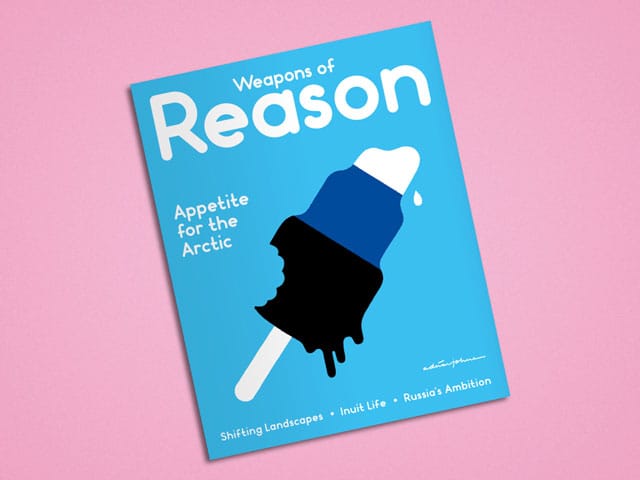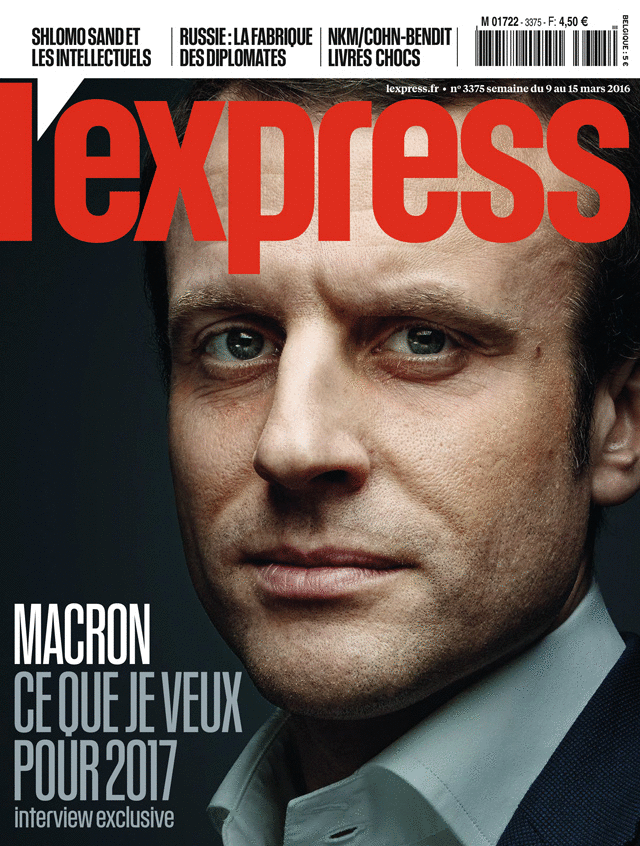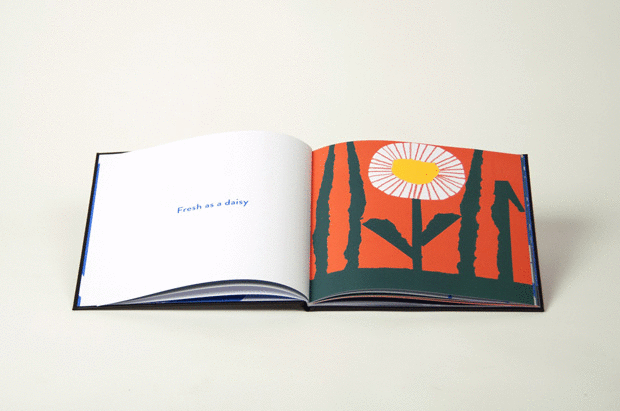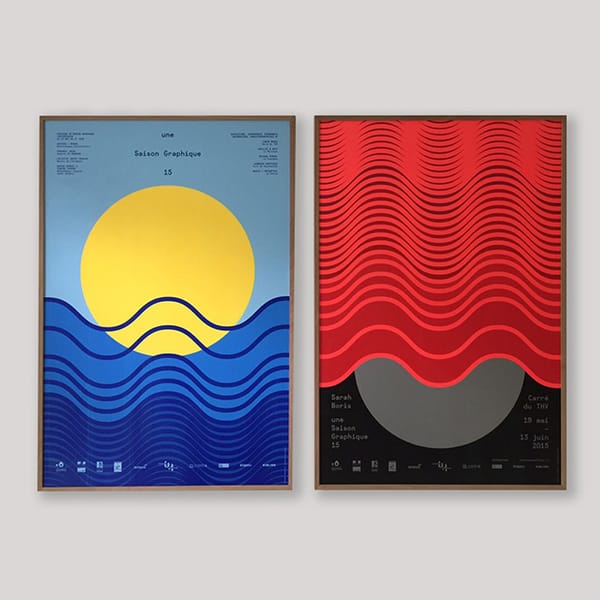Grafik caught up with Human After All's Danny Miller to get the lowdown on presenting complex global challenges to the masses in an articulate, engaging (and very attractive) way, through its new publication Weapons of Reason.
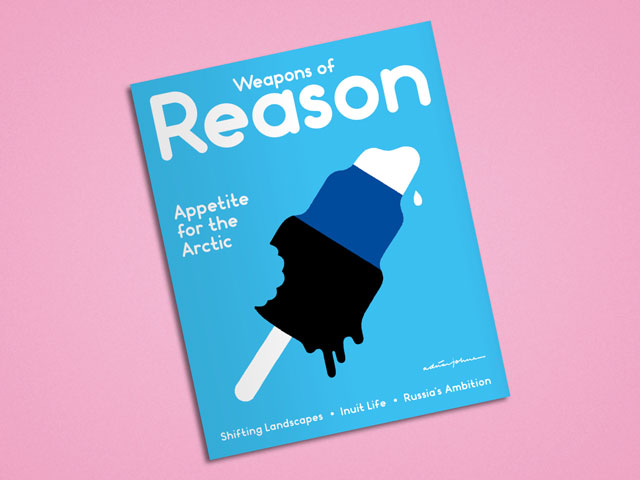
What's the originating idea behind the magazine?Broad as it may sound, the original idea was to create ‘a magazine to save the world’ – a publication that would help people to understand the biggest challenges shaping the planet. I think we really liked the idea of setting ourselves an enormous challenge.
How did you progress from first intentions to final concept?Very slowly indeed. First intentions came at South by Southwest in March 2013 where we saw Al Gore talking about his new book The Future, and were inspired to create a magazine addressing similar topics, and in a similar style. I then spent the next twelve months developing the idea, first with some journalist collaborators, and then slowly building up the courage to take it to more and more people to see what they thought.
With a few key collaborators, we spent a very long time discussing our approach, and all the difficulties and challenges associated with tackling such serious issues. Midway through 2014 I sat with my fellow directors at Human After all and we decided to formally move ahead with issue one. We assembled a team in-house and started meeting as regularly as we could, often out of normal working hours, to try and move things forward.
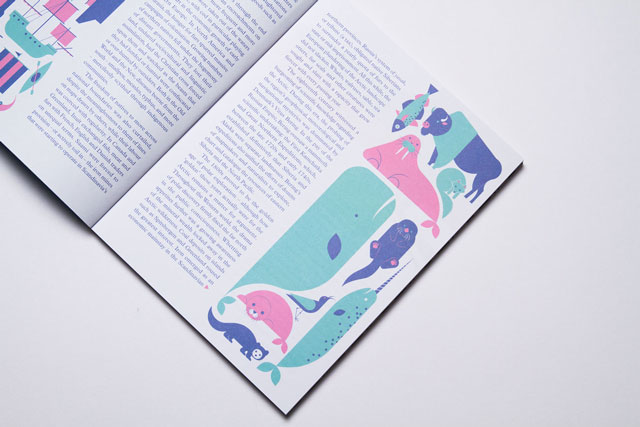
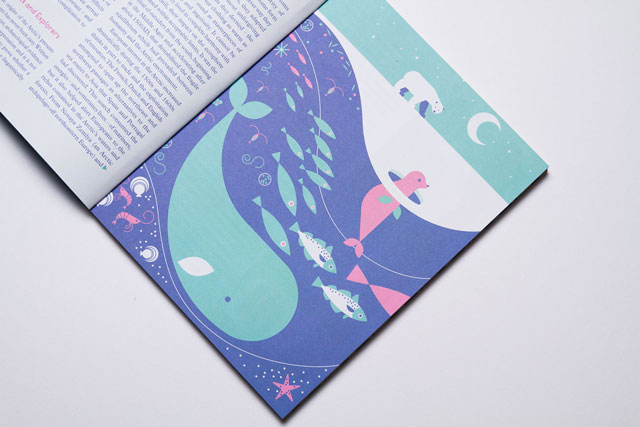
The magazine is aimed directly at people who are disengaged with its subject matter, how do you draw them in, in the first instance, and convince them to persevere in the second?
The challenge is precisely where the format of a magazine comes in. We believe that magazines are outstanding communication tools, which allow us to tell stories in ways which truly connect with people. Our goal is to inspire action through knowledge – helping people to understanding seemingly impenetrable topics, and (ideally) inspiring them to take positive action.
Your topics are both highly varied and incredibly onerous, a tough set of parameters for a publication to contain, both aesthetically and editorially – how have you addressed those difficulties so that the magazine still feels well defined?Weapons of Reason is split into past, present and future sections.
The past is about connecting the reader to a topic emotionally, by presenting the history of that topic in a sweeping fashion, using great storytelling to provide a real overview. That’s our way of drawing people in – by providing context, so that by the time the reader approaches the present, they will have an understanding of the broad issues that have led to that point, by setting up the key individuals, governments and organisations and the geography.
The present is about boiling down the complex issues to their raw components – the key facts that inform a specific debate or situation. It’s about presenting everything in a way that anyone can absorb them, giving them an instant grounding in the core arguments that surround the issue.
The future looks ahead at two divergent scenarios for the potential future of that topic. We then move into a series of action points, which is our way of inspiring people to persevere. The whole magazine is essentially a set-up for the action points, which can be further explored on our website.
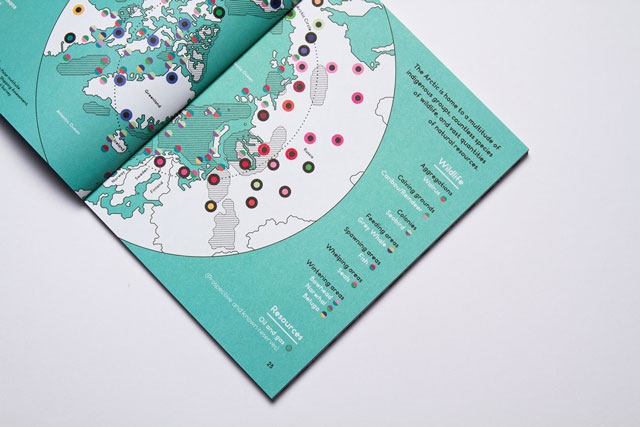
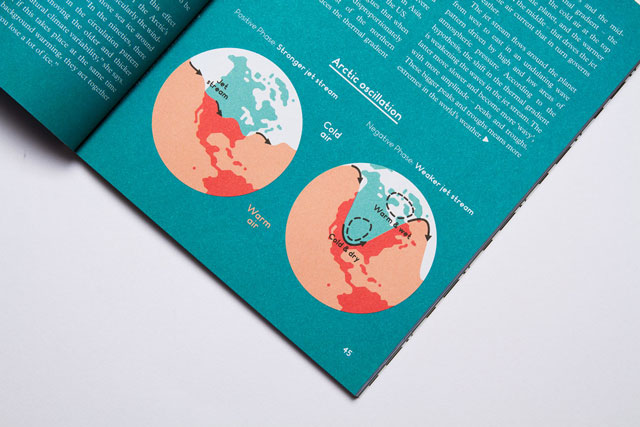
Many of the topics you are likely to discuss will be data driven, or at least rely on providing a lot of empirical evidence alongside the text – how have you incorporated those elements, which can often be overwhelming for a lay reader?
How we incorporate these elements has been easily the most difficult past of putting the magazine together. We’ve produced a lot of data visualisation work over the past eighteen months, particularly for The World Economic Forum, for whom we’ve just published the Outlook on the Global Agenda that was launched in Dubai. We often find that even the most sophisticated data visualisations can be overwhelming, either in terms of their design, or in their layers of detail. It’s not difficult to find the right data, but it’s challenging to weave it into the chronological story as seamlessly as possible.
For this reason you won’t find any intricate data-vis work per se in Weapons of Reason – instead there are a number of individual illustrated data-points, most of which have their own page. And the magazine is fairly small, because we felt that it should feel like a storybook for adults, with each page carrying its own key piece of information. We hope in this way that readers won’t feel overwhelmed by layers of complexity.
Do you think magazines work better when they have a strong agenda?I think that the best magazines often come from a small group of people who truly believe they have something to add to the conversation – something that the world needs to hear. Magazines need a reason to exist, a group of people who know themselves and know their audience. Our reason for existence is to help turn knowledge into action. We need the magazine to tell its story so effectively that by the time people reach the end and are confronted by ways to take action, they actually feel compelled to do so. This is one way we feel we can add value to our audience. As for whether this as ‘agenda’ – I’m not so sure. That word sounds a little loaded – politicised even. Weapons of Reason doesn’t plan to take a specific stand on this – just to present information to people with clarity and to let them decide how they feel about the topic.
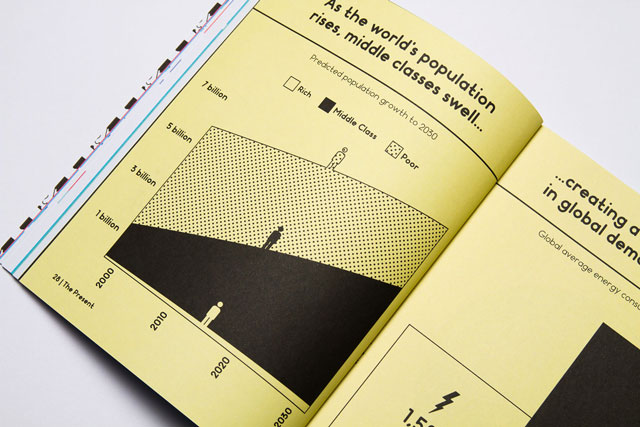
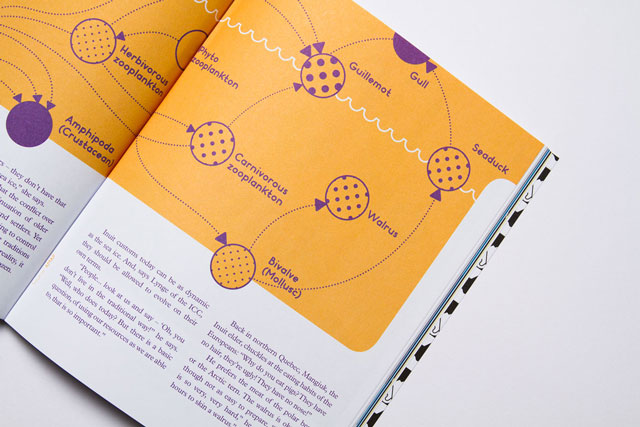
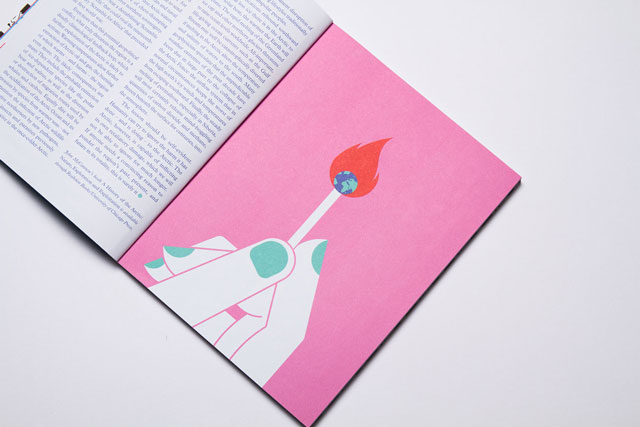
What are the advantages and disadvantages of creating a magazine as a finite series?
It’s been a really interesting challenge, principally because one of the more luxurious factors with magazines is that they can evolve slowly, over time. Issue by issue, you can always interrogate and improve your magazine. With Weapons of Reason we know that everything needed to be locked down and working from the get-go, which meant a very long development lead-time.
I wanted all eight issues to be completely considered from the outset and to complement each other as a set, both visually and editorially. For that reason, we’ve spent a lot of time deciding our eight cover themes, which include technology, society, conflict and leadership. So this whole process has been advantageous, because creative people always respond well to boundaries, and this is a particularly immovable boundary.
The distribution channels for the publication are wide-ranging – how has the fact that the first place you're likely to encounter the magazine is not the on newsstand changed your approach?In truth, the consumer magazines that we used to make (Little White Lies and Huck) did not spend a great deal of time pandering to the needs of the newsstand with coverlines, special offers, and that kind of thing. We had faith that given enough time, our magazines would connect to their audience, and they did. But this limited us too, because in the UK there’s a huge difference between being stocked in all WHSmith stores, and being stocked nationwide in newsagents.
We know the economies of scale in printing publications, and with Weapons of Reason we just want to reach the absolute maximum number of people possible – as much as our funds will allow. So it hasn’t really changed our approach to the magazine at all.
This magazine is in many ways about provocation, about engendering some sort of response – what, if any, is your barometer of success? We won’t have either advertising or cover sales figures to consider, so it’s interesting to think about how we measure the success of the project. The great joy for us in making magazines in the past was the collaborators they brought us into contact with. Suddenly people have a reason to get in touch – to write, illustrate, photograph, stock, or partner – or just talk about what we’re doing. This is happening already, which is brilliant.
Through our website and Twitter, we’ll be able to see how many people follow through in taking the actions we suggest, or if people suggest new ways to get involved. More than anything, we just hope that Weapons of Reason allows us to engage in a dialogue with as many like-minded people as possible.
weaponsofreason.com
www.humanafterall.co.uk
www.dandad.org

